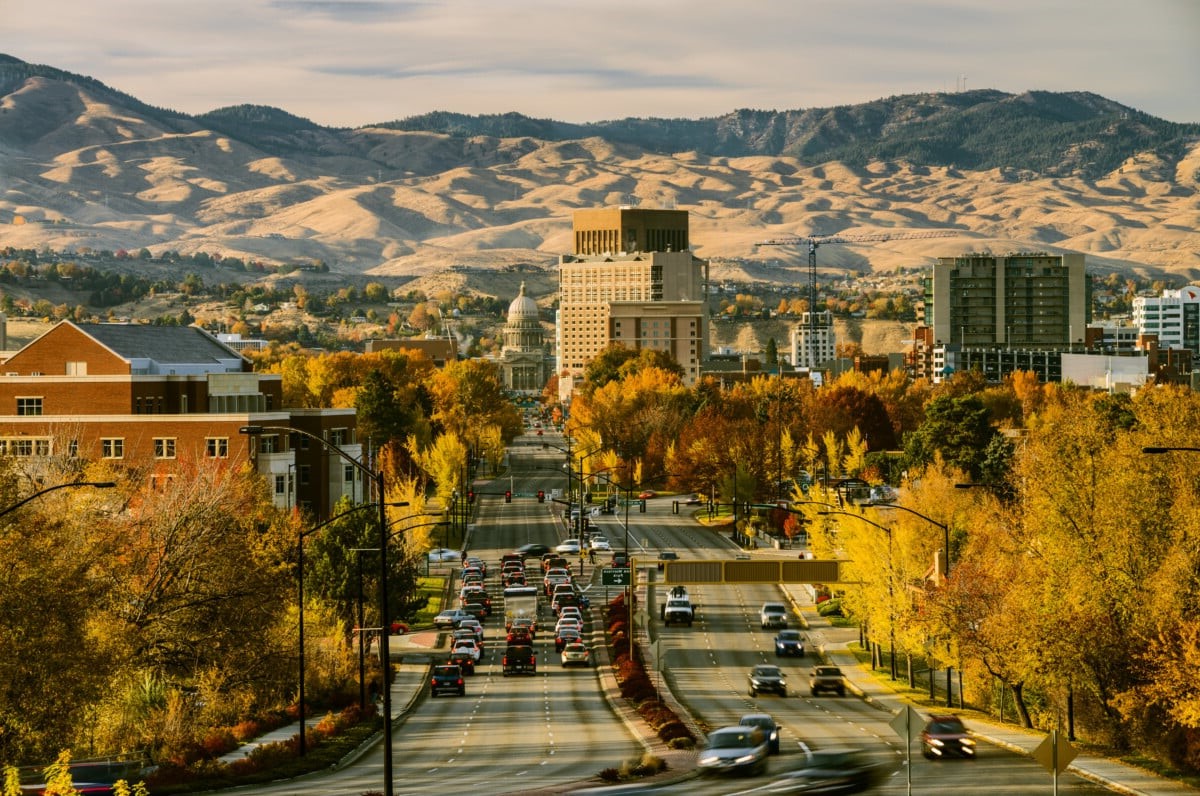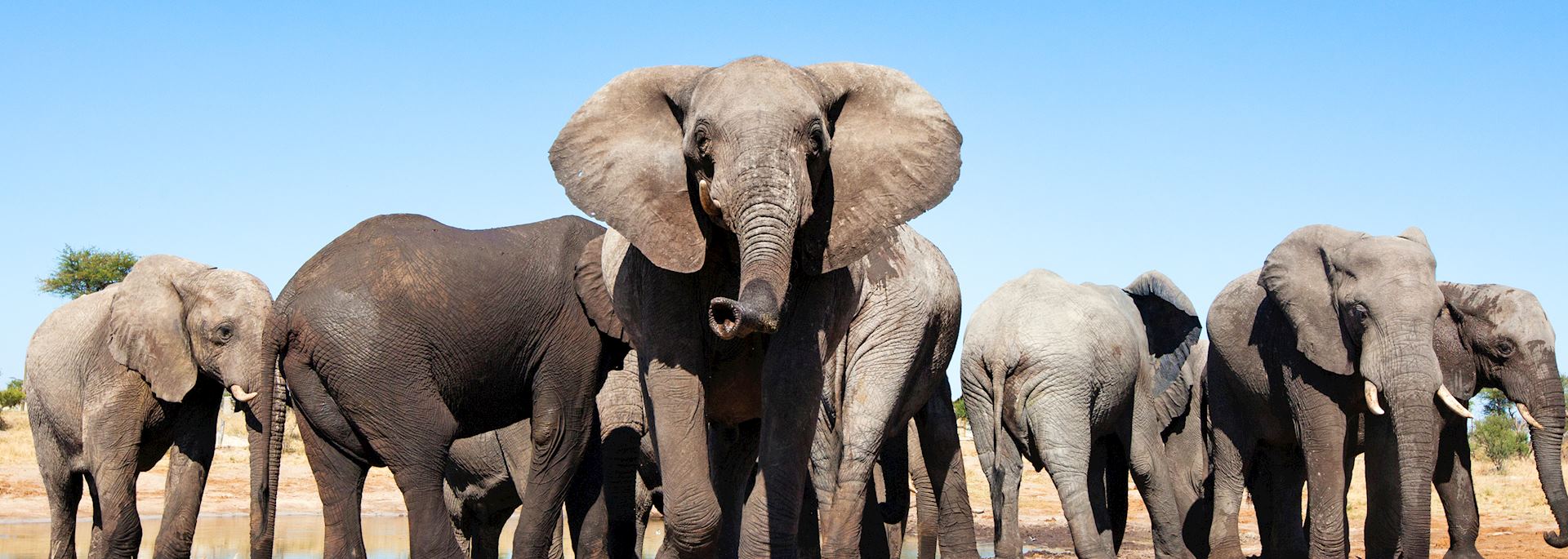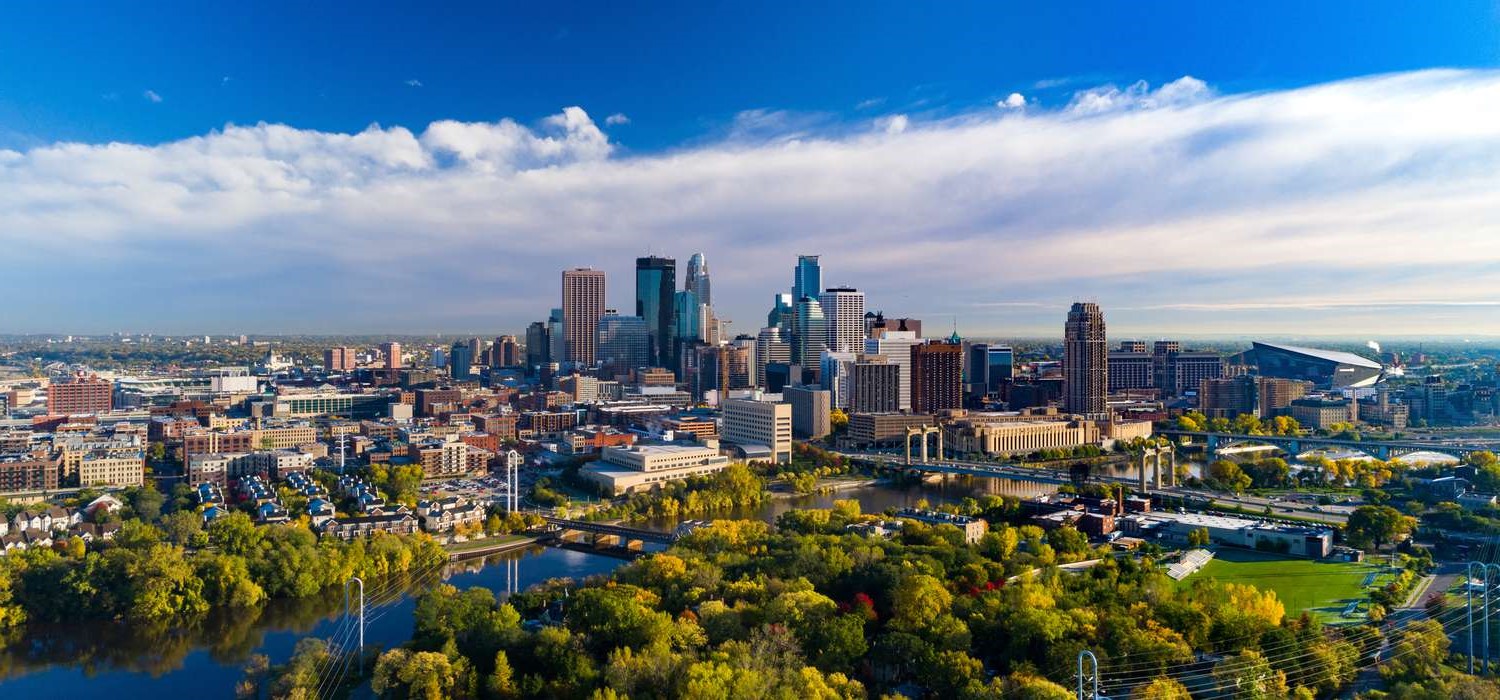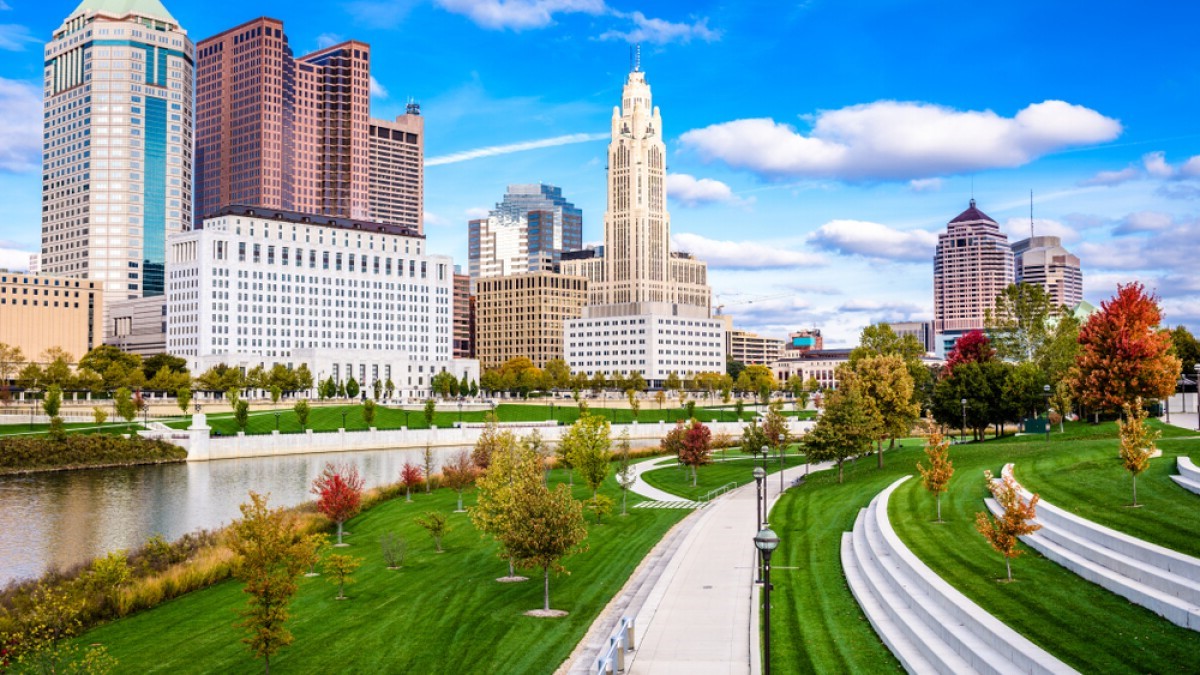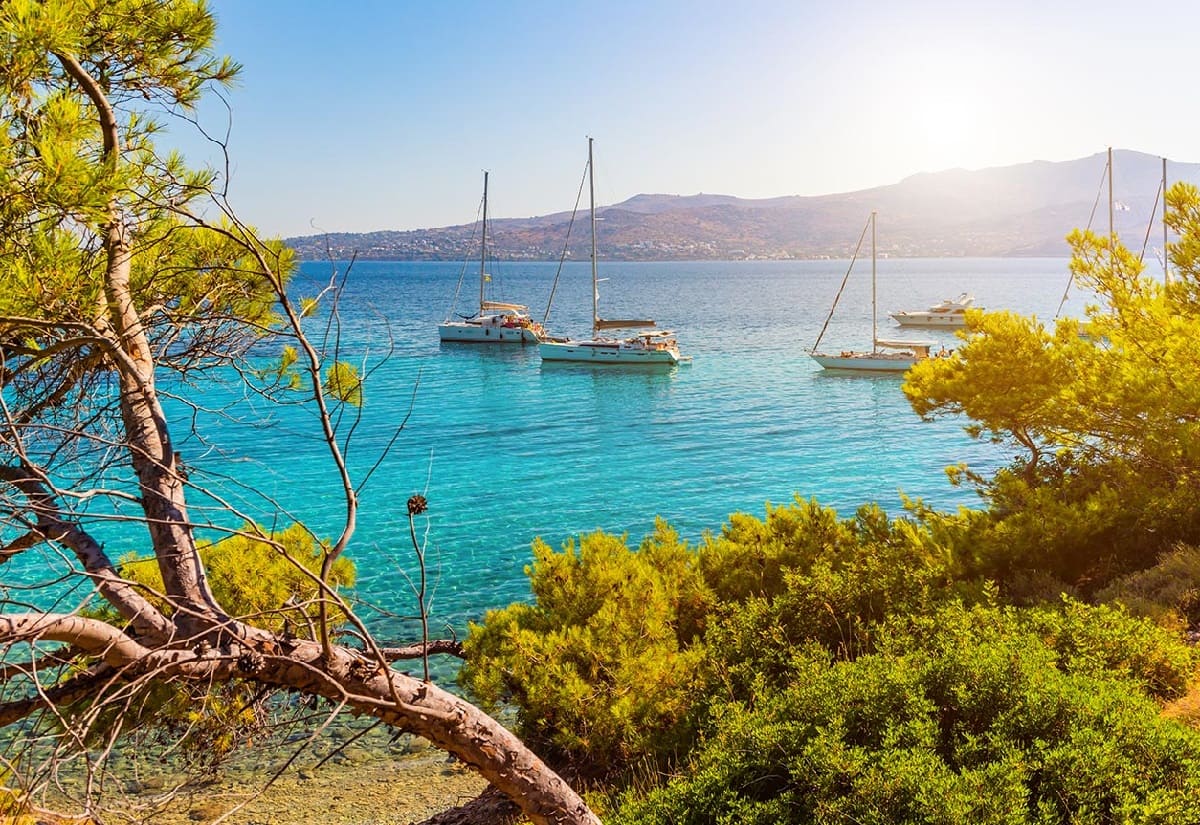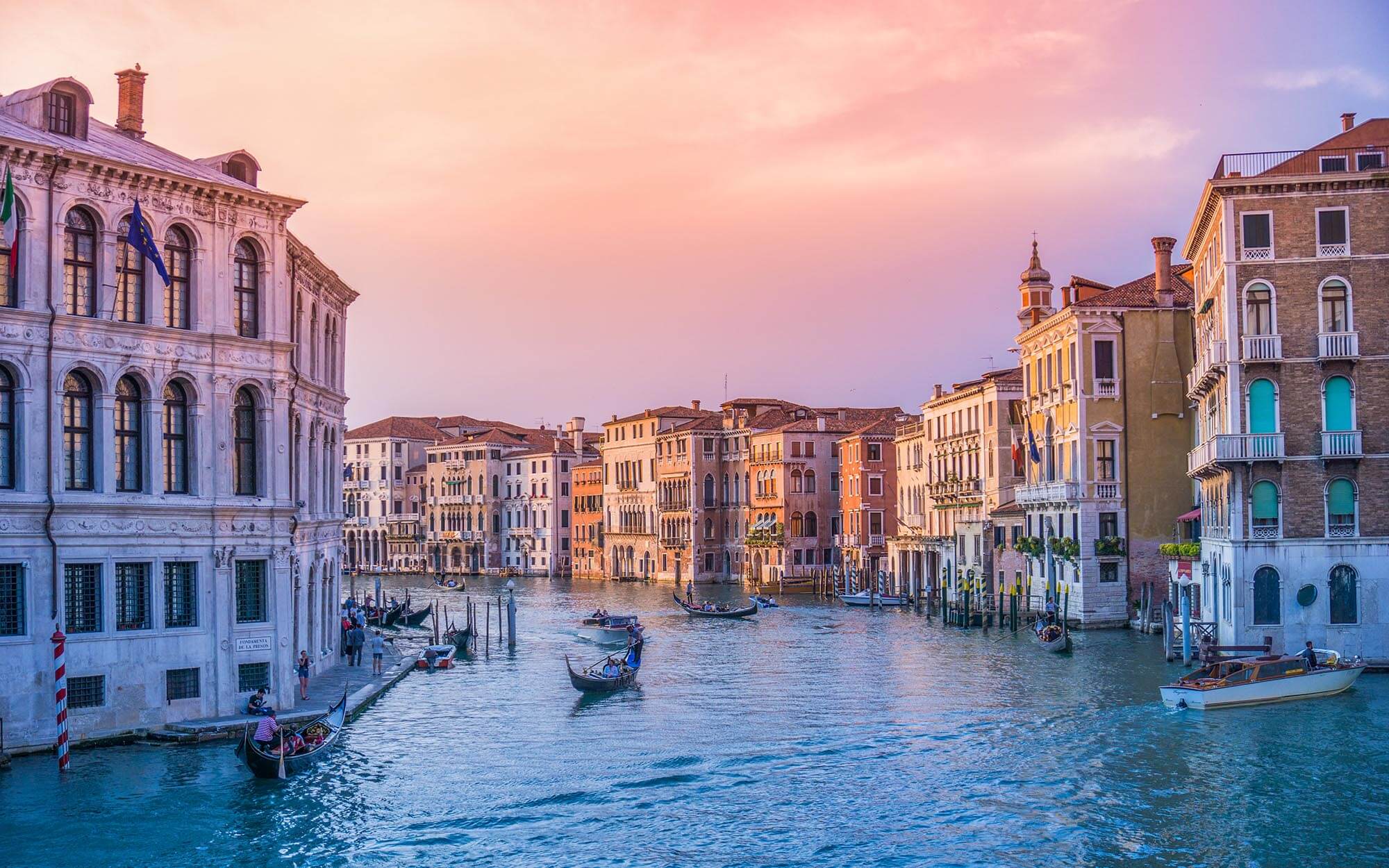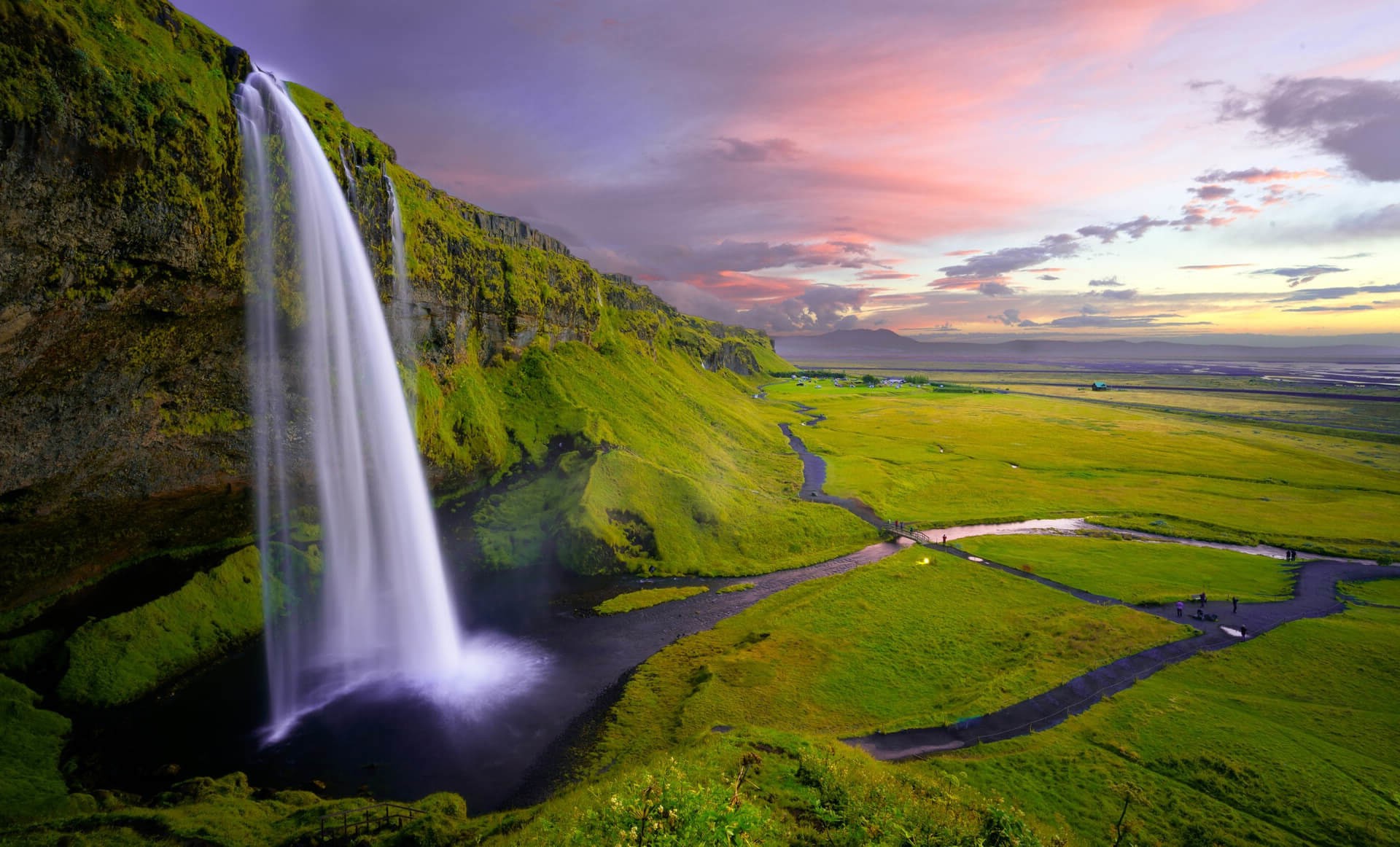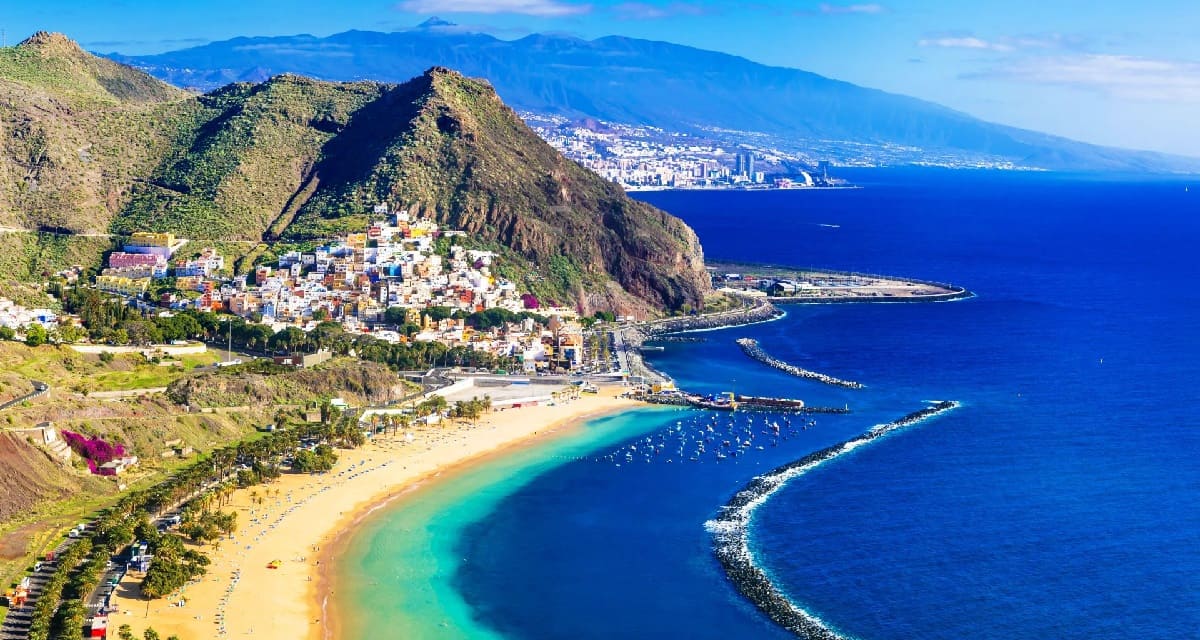Home>Weather and Climate>Morocco Weather: Monthly Climate Guide
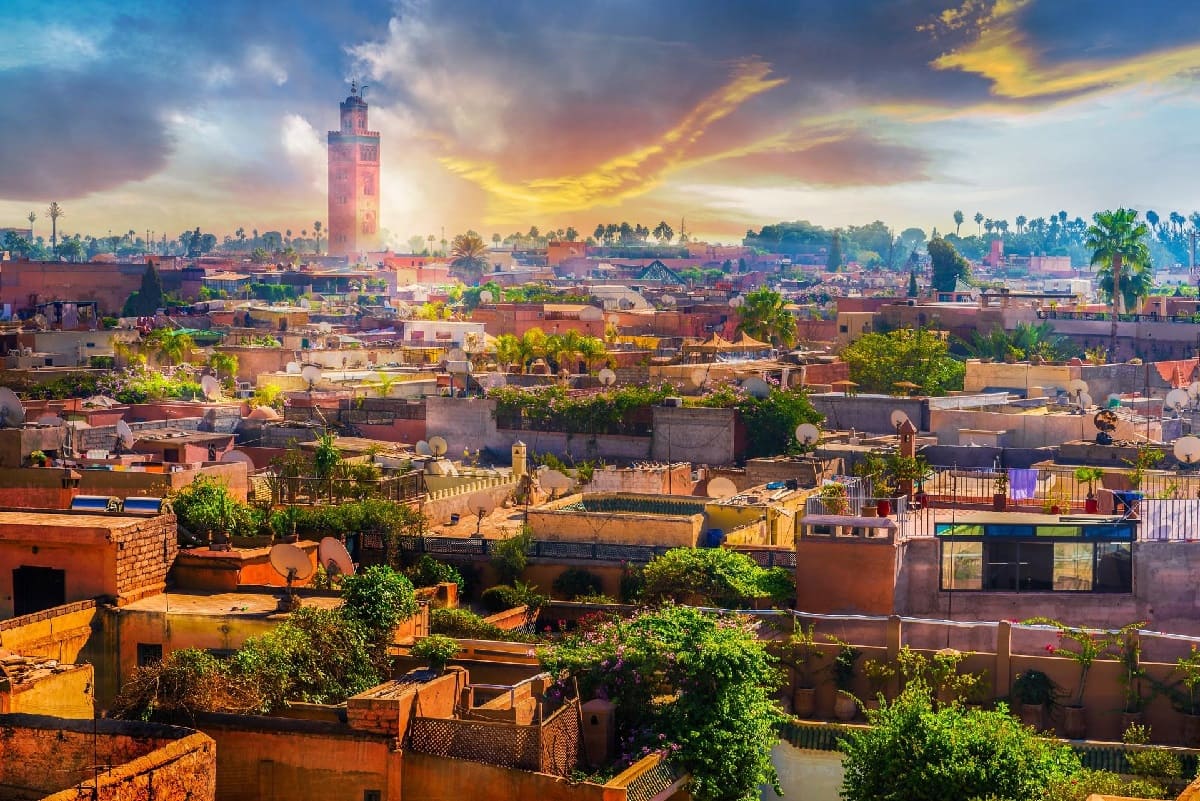

Weather and Climate
Morocco Weather: Monthly Climate Guide
Published: March 3, 2024
Plan your trip to Morocco with our monthly climate guide. Get the latest weather and climate information to make the most of your visit.
(Many of the links in this article redirect to a specific reviewed product. Your purchase of these products through affiliate links helps to generate commission for Temperatures.com, at no extra cost. Learn more)
Table of Contents
Introduction
Morocco, a land of diverse landscapes and rich cultural heritage, is blessed with a varied climate that offers something for everyone. From the snow-capped peaks of the Atlas Mountains to the sun-drenched beaches of the Atlantic coast, Morocco's weather is as diverse as its geography. Understanding the country's climate patterns is essential for anyone planning a visit, as it can greatly impact the overall experience.
The climate in Morocco is influenced by its proximity to both the Atlantic Ocean and the Mediterranean Sea, as well as the Atlas Mountains and the Sahara Desert. This unique geographical positioning results in a wide range of weather conditions across the country, making it a fascinating destination for weather enthusiasts and travelers alike.
In this comprehensive guide, we will delve into the monthly climate variations in Morocco, providing valuable insights into the weather patterns that shape the country's landscapes and lifestyles. Whether you're dreaming of exploring the bustling souks of Marrakech, trekking through the rugged terrain of the High Atlas, or simply basking in the coastal sunshine, understanding Morocco's weather throughout the year is crucial for planning a memorable and enjoyable trip.
Join us as we embark on a journey through the ever-changing Moroccan climate, from the crisp winter months to the scorching heat of summer and the refreshing breezes of autumn. By the end of this guide, you'll have a deep understanding of Morocco's weather patterns, allowing you to make informed decisions when planning your next adventure in this captivating North African gem.
Weather in January
January marks the onset of winter in Morocco, bringing with it a diverse array of weather conditions across the country. From the snow-dusted peaks of the Atlas Mountains to the mild coastal regions, Morocco experiences a noticeable drop in temperatures during this month. In the northern cities of Tangier and Tetouan, the average daytime temperatures hover around 15°C (59°F), while the nights can be significantly cooler, often dipping to around 8°C (46°F). The central regions, including the imperial city of Fes, experience similar daytime temperatures but can be colder at night, with averages around 4°C (39°F). As for the vibrant city of Marrakech, January sees daytime temperatures reaching approximately 18°C (64°F), offering a pleasant escape from the harsh winter conditions found in many other parts of the world.
In the mountainous areas, such as Ifrane and the High Atlas, January brings a winter wonderland, with snowfall transforming the landscapes into picturesque scenes reminiscent of a postcard. The ski resorts nestled in the Atlas Mountains, including Oukaimeden, attract winter sports enthusiasts seeking adventure in the snow-covered peaks.
While the coastal regions experience milder temperatures, the sea can be quite chilly, with average water temperatures around 17°C (63°F). This makes swimming less appealing for all but the most intrepid travelers. However, the coastal cities, such as Essaouira and Agadir, still offer a refreshing escape from the harsh winter climates found in other parts of the world.
In terms of precipitation, January brings varied rainfall patterns across Morocco. The northern regions receive moderate rainfall, while the southern areas, including the Sahara Desert, remain relatively dry. The diverse weather conditions in January make it an intriguing time to visit Morocco, offering a unique blend of winter activities, cultural exploration, and coastal relaxation.
Whether you're seeking a snowy adventure in the mountains, a cultural immersion in the historic cities, or a tranquil retreat along the coast, January in Morocco presents a myriad of opportunities for memorable experiences. Understanding the weather patterns during this month is essential for planning a well-rounded and enjoyable visit to this captivating North African destination.
Weather in February
February in Morocco continues to embrace the winter season, offering a diverse tapestry of weather conditions that cater to a wide range of interests and preferences. As the country transitions from the chill of January, February brings a subtle shift in temperatures and precipitation patterns, creating a captivating atmosphere for travelers and weather enthusiasts alike.
In the northern coastal cities of Tangier and Tetouan, February sees average daytime temperatures hovering around 16°C (61°F), providing a mild and pleasant climate for exploration and outdoor activities. The nights remain cool, with temperatures dropping to around 9°C (48°F), adding a touch of crispness to the evening air. The central regions, including the ancient city of Fes, experience similar daytime temperatures, while the nights can be slightly colder, with averages around 5°C (41°F). Meanwhile, Marrakech, known for its vibrant souks and historic landmarks, enjoys daytime temperatures reaching approximately 19°C (66°F), making it an inviting destination for travelers seeking a reprieve from the harsh winter conditions prevalent in other parts of the world.
In the mountainous areas, such as Ifrane and the High Atlas, February maintains its winter charm, with snow-covered landscapes offering a picturesque backdrop for outdoor adventures. The ski resorts nestled in the Atlas Mountains, including Oukaimeden, continue to attract winter sports enthusiasts eager to carve through the powdery slopes and indulge in the breathtaking mountain vistas.
Along the Atlantic coast, cities like Essaouira and Agadir offer a delightful escape, with daytime temperatures averaging around 20°C (68°F). While the sea remains cool, with average water temperatures of approximately 17°C (63°F), the coastal regions provide a tranquil setting for leisurely strolls along the shore and the opportunity to savor the fresh ocean breeze.
Precipitation patterns in February vary across Morocco, with the northern regions experiencing moderate rainfall, while the southern areas, including the Sahara Desert, remain relatively dry. This diversity in weather conditions presents an intriguing tapestry of experiences for visitors, from exploring the historic medinas and bustling souks to embarking on outdoor adventures in the mountains and along the coast.
As February unfolds, Morocco invites travelers to embrace its winter offerings, from snow-dusted landscapes to mild coastal retreats, creating a captivating tapestry of experiences for those seeking a unique and enriching travel experience. Understanding the weather patterns during this month is essential for planning a well-rounded and enjoyable visit to this captivating North African destination.
Weather in March
March heralds the transition from winter to spring in Morocco, bringing a delightful shift in weather patterns that breathe new life into the landscapes and offer a diverse array of experiences for travelers. As the country emerges from the cooler temperatures of the previous months, March sets the stage for a captivating blend of climates, from the snow-capped peaks of the Atlas Mountains to the blossoming coastal regions.
In the northern cities of Tangier and Tetouan, March introduces milder daytime temperatures, averaging around 18°C (64°F), creating a pleasant atmosphere for outdoor exploration and cultural immersion. The nights remain cool, with temperatures hovering around 10°C (50°F), adding a touch of crispness to the evening air. The central regions, including the historic city of Fes, experience similar daytime temperatures, while the nights can be slightly cooler, with averages around 7°C (45°F). Meanwhile, Marrakech, renowned for its bustling souks and architectural wonders, enjoys daytime temperatures reaching approximately 22°C (72°F), offering a welcoming climate for visitors eager to soak in the city's vibrant ambiance.
In the mountainous areas, such as Ifrane and the High Atlas, March marks the gradual transition from winter to spring, with the snow giving way to lush greenery and blooming wildflowers. The ski resorts nestled in the Atlas Mountains, including Oukaimeden, undergo a transformation as nature awakens from its winter slumber, creating a picturesque backdrop for outdoor enthusiasts and nature lovers.
Along the Atlantic coast, cities like Essaouira and Agadir embrace the arrival of spring, with daytime temperatures averaging around 21°C (70°F). The sea, although still cool, becomes more inviting, with average water temperatures of approximately 17°C (63°F), offering the perfect setting for leisurely beach walks and seaside relaxation.
Precipitation patterns in March vary across Morocco, with the northern regions experiencing moderate rainfall as the country transitions into spring, while the southern areas, including the Sahara Desert, remain relatively dry. This diversity in weather conditions presents a captivating tapestry of experiences for visitors, from exploring the vibrant cityscapes and cultural landmarks to embarking on outdoor adventures in the mountains and along the coast.
As March unfolds, Morocco invites travelers to embrace the enchanting transition from winter to spring, offering a harmonious blend of climates that cater to a wide range of interests and preferences. Understanding the weather patterns during this month is essential for planning a well-rounded and enjoyable visit to this captivating North African destination.
Weather in April
April in Morocco ushers in the much-anticipated arrival of spring, painting the landscapes with vibrant blooms and offering a delightful tapestry of weather conditions that captivate travelers and locals alike. As the country emerges from the remnants of winter, April brings a harmonious blend of climates, from the awakening of nature in the Atlas Mountains to the balmy coastal regions along the Atlantic.
In the northern cities of Tangier and Tetouan, April introduces pleasantly mild daytime temperatures, averaging around 20°C (68°F), creating an inviting atmosphere for outdoor exploration and cultural immersion. The nights become milder, with temperatures hovering around 12°C (54°F), providing a comfortable setting for evening strolls and al fresco dining experiences. The central regions, including the historic city of Fes, experience similar daytime temperatures, while the nights maintain a pleasant ambiance, with averages around 9°C (48°F). Meanwhile, Marrakech, renowned for its bustling souks and architectural wonders, enjoys daytime temperatures reaching approximately 25°C (77°F), inviting visitors to revel in the city's vibrant energy and cultural richness.
In the mountainous areas, such as Ifrane and the High Atlas, April marks the peak of spring, with the landscapes adorned in a kaleidoscope of wildflowers and verdant foliage. The ski resorts nestled in the Atlas Mountains, including Oukaimeden, undergo a remarkable transformation as nature bursts into full bloom, offering a picturesque backdrop for outdoor enthusiasts and nature lovers.
Along the Atlantic coast, cities like Essaouira and Agadir embrace the gentle warmth of spring, with daytime temperatures averaging around 23°C (73°F). The sea becomes more inviting, with average water temperatures of approximately 18°C (64°F), beckoning travelers to indulge in leisurely beach activities and seaside relaxation.
Precipitation patterns in April vary across Morocco, with the northern regions experiencing moderate rainfall as the country revels in the rejuvenating embrace of spring, while the southern areas, including the Sahara Desert, remain relatively dry. This diversity in weather conditions presents a captivating tapestry of experiences for visitors, from exploring the vibrant cityscapes and cultural landmarks to embarking on outdoor adventures in the mountains and along the coast.
As April unfolds, Morocco invites travelers to embrace the enchanting arrival of spring, offering a harmonious blend of climates that cater to a wide range of interests and preferences. Understanding the weather patterns during this month is essential for planning a well-rounded and enjoyable visit to this captivating North African destination.
Read more: Morocco February Climate Guide
Weather in May
May in Morocco heralds the transition to warmer weather and the blossoming of nature, creating a captivating tapestry of climates that beckon travelers to explore the diverse landscapes and cultural treasures. As the country emerges from the gentle embrace of spring, May offers a harmonious blend of weather conditions, from the lush mountain valleys to the sun-kissed coastal enclaves.
In the northern cities of Tangier and Tetouan, May introduces pleasantly warm daytime temperatures, averaging around 23°C (73°F), creating an inviting atmosphere for outdoor exploration and cultural immersion. The nights become milder, with temperatures hovering around 15°C (59°F), providing a comfortable setting for evening activities and al fresco dining experiences. The central regions, including the historic city of Fes, experience similar daytime temperatures, while the nights maintain a pleasant ambiance, with averages around 12°C (54°F). Meanwhile, Marrakech, renowned for its bustling souks and architectural wonders, enjoys daytime temperatures reaching approximately 28°C (82°F), inviting visitors to revel in the city's vibrant energy and cultural richness.
In the mountainous areas, such as Ifrane and the High Atlas, May unveils a breathtaking spectacle of nature, with the landscapes adorned in a vibrant tapestry of wildflowers and verdant foliage. The ski resorts nestled in the Atlas Mountains, including Oukaimeden, undergo a remarkable transformation as nature bursts into full bloom, offering a picturesque backdrop for outdoor enthusiasts and nature lovers.
Along the Atlantic coast, cities like Essaouira and Agadir embrace the gentle warmth of spring, with daytime temperatures averaging around 25°C (77°F). The sea becomes more inviting, with average water temperatures of approximately 19°C (66°F), beckoning travelers to indulge in leisurely beach activities and seaside relaxation.
Precipitation patterns in May vary across Morocco, with the northern regions experiencing moderate rainfall as the country revels in the rejuvenating embrace of spring, while the southern areas, including the Sahara Desert, remain relatively dry. This diversity in weather conditions presents a captivating tapestry of experiences for visitors, from exploring the vibrant cityscapes and cultural landmarks to embarking on outdoor adventures in the mountains and along the coast.
As May unfolds, Morocco invites travelers to embrace the enchanting arrival of warmer weather and the blossoming of nature, offering a harmonious blend of climates that cater to a wide range of interests and preferences. Understanding the weather patterns during this month is essential for planning a well-rounded and enjoyable visit to this captivating North African destination.
Weather in June
June in Morocco marks the onset of summer, bringing a delightful transition to warmer weather and a vibrant tapestry of natural beauty that captivates travelers and locals alike. As the country embraces the sun-drenched days and balmy evenings, June offers a harmonious blend of weather conditions, from the sun-kissed coastal enclaves to the captivating mountain landscapes.
In the northern cities of Tangier and Tetouan, June introduces pleasantly warm daytime temperatures, averaging around 26°C (79°F), creating an inviting atmosphere for outdoor exploration and cultural immersion. The nights become milder, with temperatures hovering around 17°C (63°F), providing a comfortable setting for evening activities and al fresco dining experiences. The central regions, including the historic city of Fes, experience similar daytime temperatures, while the nights maintain a pleasant ambiance, with averages around 14°C (57°F). Meanwhile, Marrakech, renowned for its bustling souks and architectural wonders, enjoys daytime temperatures reaching approximately 32°C (90°F), inviting visitors to revel in the city's vibrant energy and cultural richness.
In the mountainous areas, such as Ifrane and the High Atlas, June unveils a breathtaking spectacle of nature, with the landscapes adorned in a vibrant tapestry of wildflowers and lush greenery. The ski resorts nestled in the Atlas Mountains, including Oukaimeden, offer a refreshing escape from the summer heat, providing a picturesque backdrop for outdoor enthusiasts and nature lovers.
Along the Atlantic coast, cities like Essaouira and Agadir embrace the gentle warmth of early summer, with daytime temperatures averaging around 27°C (81°F). The sea becomes more inviting, with average water temperatures of approximately 20°C (68°F), beckoning travelers to indulge in leisurely beach activities and seaside relaxation.
Precipitation patterns in June vary across Morocco, with the northern regions experiencing minimal rainfall as the country revels in the embrace of early summer, while the southern areas, including the Sahara Desert, remain relatively dry. This diversity in weather conditions presents a captivating tapestry of experiences for visitors, from exploring the vibrant cityscapes and cultural landmarks to embarking on outdoor adventures in the mountains and along the coast.
As June unfolds, Morocco invites travelers to embrace the enchanting arrival of summer, offering a harmonious blend of climates that cater to a wide range of interests and preferences. Understanding the weather patterns during this month is essential for planning a well-rounded and enjoyable visit to this captivating North African destination.
Weather in July
July in Morocco signals the height of summer, enveloping the country in a warm embrace and offering a captivating array of weather conditions that cater to a wide range of interests and preferences. As the sun graces the landscapes with its radiant presence, July presents a harmonious blend of climates, from the sun-drenched coastal havens to the refreshing mountain retreats.
In the northern cities of Tangier and Tetouan, July introduces warm daytime temperatures, averaging around 28°C (82°F), creating an inviting atmosphere for outdoor exploration and cultural immersion. The nights maintain a pleasant warmth, with temperatures hovering around 19°C (66°F), providing a comfortable setting for evening activities and al fresco dining experiences. The central regions, including the historic city of Fes, experience similar daytime temperatures, while the nights offer a mild ambiance, with averages around 16°C (61°F). Meanwhile, Marrakech, renowned for its bustling souks and architectural wonders, enjoys daytime temperatures reaching approximately 38°C (100°F), inviting visitors to revel in the city's vibrant energy and cultural richness.
In the mountainous areas, such as Ifrane and the High Atlas, July unveils a refreshing escape from the summer heat, with the landscapes adorned in lush greenery and offering a cool respite from the warm temperatures prevalent in other parts of the country. The ski resorts nestled in the Atlas Mountains, including Oukaimeden, provide a picturesque backdrop for outdoor enthusiasts and nature lovers, with daytime temperatures averaging around 25°C (77°F).
Along the Atlantic coast, cities like Essaouira and Agadir embrace the warmth of summer, with daytime temperatures averaging around 29°C (84°F). The sea becomes inviting, with average water temperatures of approximately 21°C (70°F), beckoning travelers to indulge in leisurely beach activities and seaside relaxation.
Precipitation patterns in July vary across Morocco, with the northern regions experiencing minimal rainfall as the country revels in the embrace of summer, while the southern areas, including the Sahara Desert, remain relatively dry. This diversity in weather conditions presents a captivating tapestry of experiences for visitors, from exploring the vibrant cityscapes and cultural landmarks to embarking on outdoor adventures in the mountains and along the coast.
As July unfolds, Morocco invites travelers to embrace the enchanting warmth of summer, offering a harmonious blend of climates that cater to a wide range of interests and preferences. Understanding the weather patterns during this month is essential for planning a well-rounded and enjoyable visit to this captivating North African destination.
Weather in August
August in Morocco epitomizes the height of summer, enveloping the country in a warm embrace and offering a captivating array of weather conditions that cater to a wide range of interests and preferences. As the sun graces the landscapes with its radiant presence, August presents a harmonious blend of climates, from the sun-drenched coastal havens to the refreshing mountain retreats.
In the northern cities of Tangier and Tetouan, August introduces warm daytime temperatures, averaging around 29°C (84°F), creating an inviting atmosphere for outdoor exploration and cultural immersion. The nights maintain a pleasant warmth, with temperatures hovering around 20°C (68°F), providing a comfortable setting for evening activities and al fresco dining experiences. The central regions, including the historic city of Fes, experience similar daytime temperatures, while the nights offer a mild ambiance, with averages around 18°C (64°F). Meanwhile, Marrakech, renowned for its bustling souks and architectural wonders, enjoys daytime temperatures reaching approximately 40°C (104°F), inviting visitors to revel in the city's vibrant energy and cultural richness.
In the mountainous areas, such as Ifrane and the High Atlas, August unveils a refreshing escape from the summer heat, with the landscapes adorned in lush greenery and offering a cool respite from the warm temperatures prevalent in other parts of the country. The ski resorts nestled in the Atlas Mountains, including Oukaimeden, provide a picturesque backdrop for outdoor enthusiasts and nature lovers, with daytime temperatures averaging around 27°C (81°F).
Along the Atlantic coast, cities like Essaouira and Agadir embrace the warmth of summer, with daytime temperatures averaging around 30°C (86°F). The sea becomes inviting, with average water temperatures of approximately 22°C (72°F), beckoning travelers to indulge in leisurely beach activities and seaside relaxation.
Precipitation patterns in August vary across Morocco, with the northern regions experiencing minimal rainfall as the country revels in the embrace of summer, while the southern areas, including the Sahara Desert, remain relatively dry. This diversity in weather conditions presents a captivating tapestry of experiences for visitors, from exploring the vibrant cityscapes and cultural landmarks to embarking on outdoor adventures in the mountains and along the coast.
As August unfolds, Morocco invites travelers to embrace the enchanting warmth of summer, offering a harmonious blend of climates that cater to a wide range of interests and preferences. Understanding the weather patterns during this month is essential for planning a well-rounded and enjoyable visit to this captivating North African destination.
Read more: Morocco Travel Guide: Optimal Visit Seasons
Weather in September
September in Morocco marks the transition from the scorching heat of summer to the pleasant embrace of early autumn, offering a delightful blend of weather conditions that beckon travelers to explore the diverse landscapes and cultural treasures. As the country bids farewell to the peak of summer, September presents a harmonious tapestry of climates, from the sun-kissed coastal enclaves to the refreshing mountain retreats.
In the northern cities of Tangier and Tetouan, September introduces comfortably warm daytime temperatures, averaging around 27°C (81°F), creating an inviting atmosphere for outdoor exploration and cultural immersion. The nights become milder, with temperatures hovering around 19°C (66°F), providing a pleasant setting for evening activities and al fresco dining experiences. The central regions, including the historic city of Fes, experience similar daytime temperatures, while the nights offer a mild ambiance, with averages around 16°C (61°F). Meanwhile, Marrakech, renowned for its bustling souks and architectural wonders, enjoys daytime temperatures reaching approximately 34°C (93°F), inviting visitors to revel in the city's vibrant energy and cultural richness.
In the mountainous areas, such as Ifrane and the High Atlas, September unveils a refreshing escape from the lingering summer warmth, with the landscapes adorned in a blend of late summer hues and offering a cool respite from the temperatures prevalent in other parts of the country. The ski resorts nestled in the Atlas Mountains, including Oukaimeden, provide a picturesque backdrop for outdoor enthusiasts and nature lovers, with daytime temperatures averaging around 23°C (73°F).
Along the Atlantic coast, cities like Essaouira and Agadir embrace the gentle warmth of early autumn, with daytime temperatures averaging around 28°C (82°F). The sea remains inviting, with average water temperatures of approximately 22°C (72°F), beckoning travelers to indulge in leisurely beach activities and seaside relaxation.
Precipitation patterns in September vary across Morocco, with the northern regions experiencing minimal rainfall as the country transitions into early autumn, while the southern areas, including the Sahara Desert, remain relatively dry. This diversity in weather conditions presents a captivating tapestry of experiences for visitors, from exploring the vibrant cityscapes and cultural landmarks to embarking on outdoor adventures in the mountains and along the coast.
As September unfolds, Morocco invites travelers to embrace the enchanting transition to early autumn, offering a harmonious blend of climates that cater to a wide range of interests and preferences. Understanding the weather patterns during this month is essential for planning a well-rounded and enjoyable visit to this captivating North African destination.
Weather in October
October in Morocco marks the onset of autumn, ushering in a delightful transition from the lingering warmth of summer to the refreshing embrace of cooler temperatures and vibrant landscapes. As the country bids adieu to the peak of summer, October presents a harmonious tapestry of climates, from the sun-kissed coastal enclaves to the captivating mountain retreats.
In the northern cities of Tangier and Tetouan, October introduces comfortably mild daytime temperatures, averaging around 24°C (75°F), creating an inviting atmosphere for outdoor exploration and cultural immersion. The nights become cooler, with temperatures hovering around 16°C (61°F), providing a pleasant setting for evening activities and al fresco dining experiences. The central regions, including the historic city of Fes, experience similar daytime temperatures, while the nights offer a refreshing ambiance, with averages around 13°C (55°F). Meanwhile, Marrakech, renowned for its bustling souks and architectural wonders, enjoys daytime temperatures reaching approximately 30°C (86°F), inviting visitors to revel in the city's vibrant energy and cultural richness.
In the mountainous areas, such as Ifrane and the High Atlas, October unveils a breathtaking transformation of nature, with the landscapes adorned in a symphony of autumnal hues and offering a refreshing escape from the warmth prevalent in other parts of the country. The ski resorts nestled in the Atlas Mountains, including Oukaimeden, provide a picturesque backdrop for outdoor enthusiasts and nature lovers, with daytime temperatures averaging around 20°C (68°F).
Along the Atlantic coast, cities like Essaouira and Agadir embrace the gentle transition to autumn, with daytime temperatures averaging around 25°C (77°F). The sea remains inviting, with average water temperatures of approximately 21°C (70°F), beckoning travelers to indulge in leisurely beach activities and seaside relaxation.
Precipitation patterns in October vary across Morocco, with the northern regions experiencing minimal rainfall as the country revels in the refreshing embrace of autumn, while the southern areas, including the Sahara Desert, remain relatively dry. This diversity in weather conditions presents a captivating tapestry of experiences for visitors, from exploring the vibrant cityscapes and cultural landmarks to embarking on outdoor adventures in the mountains and along the coast.
As October unfolds, Morocco invites travelers to embrace the enchanting transition to autumn, offering a harmonious blend of climates that cater to a wide range of interests and preferences. Understanding the weather patterns during this month is essential for planning a well-rounded and enjoyable visit to this captivating North African destination.
Weather in November
November in Morocco signifies the gradual transition from autumn to the onset of winter, presenting a captivating blend of weather conditions that paint the landscapes with a diverse array of hues and textures. As the country prepares for the cooler months ahead, November offers a harmonious tapestry of climates, from the crisp mountain vistas to the mild coastal regions.
In the northern cities of Tangier and Tetouan, November introduces comfortably mild daytime temperatures, averaging around 20°C (68°F), creating an inviting atmosphere for outdoor exploration and cultural immersion. The nights become cooler, with temperatures hovering around 12°C (54°F), providing a pleasant setting for evening activities and leisurely strolls. The central regions, including the historic city of Fes, experience similar daytime temperatures, while the nights offer a refreshing ambiance, with averages around 9°C (48°F). Meanwhile, Marrakech, renowned for its bustling souks and architectural wonders, enjoys daytime temperatures reaching approximately 24°C (75°F), inviting visitors to revel in the city's vibrant energy and cultural richness.
In the mountainous areas, such as Ifrane and the High Atlas, November unveils a breathtaking transformation of nature, with the landscapes adorned in a symphony of autumnal hues and offering a refreshing escape from the cooler temperatures prevalent in other parts of the country. The ski resorts nestled in the Atlas Mountains, including Oukaimeden, provide a picturesque backdrop for outdoor enthusiasts and nature lovers, with daytime temperatures averaging around 15°C (59°F).
Along the Atlantic coast, cities like Essaouira and Agadir embrace the gentle transition to late autumn, with daytime temperatures averaging around 22°C (72°F). The sea remains inviting, with average water temperatures of approximately 19°C (66°F), beckoning travelers to indulge in leisurely beach activities and seaside relaxation.
Precipitation patterns in November vary across Morocco, with the northern regions experiencing minimal rainfall as the country prepares for the cooler months, while the southern areas, including the Sahara Desert, remain relatively dry. This diversity in weather conditions presents a captivating tapestry of experiences for visitors, from exploring the vibrant cityscapes and cultural landmarks to embarking on outdoor adventures in the mountains and along the coast.
As November unfolds, Morocco invites travelers to embrace the enchanting transition to late autumn, offering a harmonious blend of climates that cater to a wide range of interests and preferences. Understanding the weather patterns during this month is essential for planning a well-rounded and enjoyable visit to this captivating North African destination.
Weather in December
December in Morocco marks the advent of winter, ushering in a captivating blend of weather conditions that paint the landscapes with a diverse array of hues and textures. As the country embraces the cooler temperatures and the festive spirit that permeates the air, December offers a harmonious tapestry of climates, from the snow-dusted mountain peaks to the mild coastal regions.
In the northern cities of Tangier and Tetouan, December introduces cooler daytime temperatures, averaging around 16°C (61°F), creating a refreshing atmosphere for outdoor exploration and cultural immersion. The nights become crisper, with temperatures hovering around 8°C (46°F), providing a cozy setting for evening activities and leisurely strolls. The central regions, including the historic city of Fes, experience similar daytime temperatures, while the nights offer a brisk ambiance, with averages around 4°C (39°F). Meanwhile, Marrakech, renowned for its bustling souks and architectural wonders, enjoys daytime temperatures reaching approximately 18°C (64°F), inviting visitors to revel in the city's vibrant energy and cultural richness.
In the mountainous areas, such as Ifrane and the High Atlas, December unveils a picturesque winter wonderland, with snow blanketing the landscapes and creating a serene backdrop for outdoor enthusiasts and nature lovers. The ski resorts nestled in the Atlas Mountains, including Oukaimeden, provide a perfect escape for winter sports enthusiasts seeking adventure in the snow-covered peaks.
Along the Atlantic coast, cities like Essaouira and Agadir embrace the mild winter temperatures, with daytime averages around 19°C (66°F). The sea, although cool, remains inviting, with average water temperatures of approximately 17°C (63°F), offering a tranquil setting for leisurely beach walks and seaside relaxation.
Precipitation patterns in December vary across Morocco, with the northern regions experiencing moderate rainfall as the country embraces the winter season, while the southern areas, including the Sahara Desert, remain relatively dry. This diversity in weather conditions presents a captivating tapestry of experiences for visitors, from exploring the vibrant cityscapes and cultural landmarks to embarking on outdoor adventures in the mountains and along the coast.
As December unfolds, Morocco invites travelers to embrace the enchanting onset of winter, offering a harmonious blend of climates that cater to a wide range of interests and preferences. Understanding the weather patterns during this month is essential for planning a well-rounded and enjoyable visit to this captivating North African destination.
Read more: Duluth Monthly Weather Guide
Conclusion
In conclusion, Morocco's diverse climate offers a captivating tapestry of weather conditions throughout the year, creating a rich and varied landscape for travelers to explore. From the snow-capped peaks of the Atlas Mountains to the sun-kissed beaches along the Atlantic coast, each month brings its own unique charm and opportunities for memorable experiences.
Understanding the monthly climate variations is essential for anyone planning a visit to Morocco. Whether seeking a winter adventure in the mountains, a cultural immersion in the historic cities, or a tranquil retreat along the coast, the country's weather patterns play a crucial role in shaping the overall travel experience.
The winter months, from January to March, bring a mix of cool temperatures, snowfall in the mountains, and milder conditions along the coast. This period offers a unique opportunity for winter sports enthusiasts, cultural explorers, and those seeking a peaceful coastal escape.
As spring unfolds from April to June, Morocco blossoms with vibrant landscapes and pleasant temperatures. The mountains come alive with blooming wildflowers, while the coastal regions offer a refreshing retreat for beachgoers and outdoor enthusiasts.
The summer months, from July to September, bring warm temperatures and a lively atmosphere to the country. Coastal cities beckon with inviting beaches, while the mountains provide a cool respite from the summer heat, making it an ideal time for a diverse range of outdoor activities.
Finally, as autumn arrives from October to December, Morocco transitions to cooler temperatures and a colorful display of autumnal hues. The mountains offer a picturesque backdrop for nature lovers, while the coastal regions maintain their allure for travelers seeking a more relaxed atmosphere.
In essence, Morocco's weather and climate guide present a wealth of opportunities for travelers to immerse themselves in the country's natural beauty, cultural heritage, and diverse landscapes. By understanding the monthly climate variations, visitors can plan their adventures with confidence, ensuring a well-rounded and enjoyable experience in this captivating North African destination.

